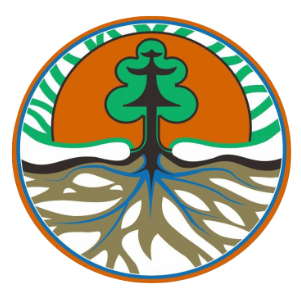
Although accurate estimates of biomass loss during peat fires, and recovery over time, are critical in understanding net peat ecosystem carbon balance, empirical data to inform carbon models are scarce. During the 2019 dry season, fires burned through 133,631 ha of degraded peatlands of Central Kalimantan. This study reports carbon loss from surface fuels and the top peat layer of 18.5 Mg C ha−1 (3.5 from surface fuels and 15.0 from root/peat layer), releasing an average of 2.5 Gg (range 1.8–3.1 Gg) carbon in these fires. Peat surface change measurements over one month, as the fires continued to smolder, indicated that about 20 cm of the surface was lost to combustion of peat and fern rhizomes, roots and recently incorporated organic residues that we sampled as the top peat layer. Time series analysis of live green vegetation (NDVI trend), combined with field observations of vegetation recovery two years after the fires, indicated that vegetation recovery equivalent to fire-released carbon is likely to occur around 3 years after fires
Download:
 file
file

- Authors: Volkova, L., Adinugroho, W.C.C., Krisnawati, H., Imanuddin, R., Weston, C.J.J.
- Author Affiliation: University of Melbourne, Forestry and Environment Research, Development and Innovation Agency (FORDIA)
- Subjects: emissions, shrubs, ferns, bulk density, peatlands, peat soils, soil depth, degraded land
- Publication type: Journal Article
- Source: Fire 4(4): 64
- Year: 2021
- DOI: https://doi.org/10.3390/fire4040064
















